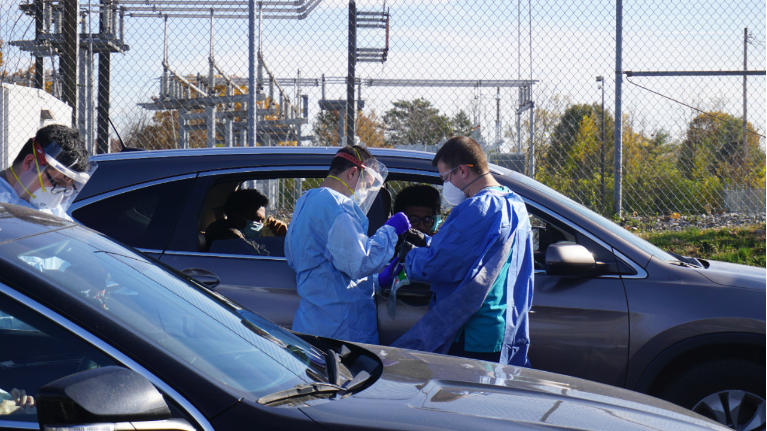COLUMBUS, Ohio — Ohio set a new weekly record for COVID-19 cases in schools Thursday, but the governor said classrooms remain safe for the state's students who are in districts offering in-person learning.
This week's update showed 1,078 new student cases and 769 new staff cases, and the state's numbers now total 4,333 cases for students and 2,735 for staff.
All schools in the top five for most total cases continued to report new infections this week. Olentangy Local School District leads the state with 140 cases.
School case data is posted to a statewide dashboard released on Sept. 17. that has been tracking cases at traditional elementary and secondary schools as well as other non-college schools. The numbers are updated weekly, and do not include cases at schools that are fully virtual, unless a virtual learning COVID-19 positive student has been on school grounds.
During a press briefing Thursday where he announced Ohio had set a new daily record for COVID-19 cases, Gov. Mike DeWine suggested changes to schools would not significantly slow the spread of the virus. In DeWine’s assessment, the coronavirus outbreak is worsening for the most part due to private gatherings and poor individual decisions.
He said schools have not reported many cases of transmission in the classroom or on school grounds. Most of it is coming from outside of school, he said.
“One of the ways we know [masks work] is we’re watching what’s happening in our schools. It’s not that we don’t have virus in our schools. We do. But by and large it’s not being spread in the classroom. And the reason it’s not being spread in the classroom is because students are wearing a mask,” DeWine said.
But Kent State epidemiologist Dr. Tara Smith said it is hard to know if schools are fueling outbreaks due to the lack of surveillance testing in elementary and secondary schools.
“To say that schools are not driving this or are not a factor in this, I don't think we can really say that without more testing in those locations, especially for younger children who may not show symptoms, but may potentially be able to spread the virus,” Smith said. “As far as I know, almost none have any set-up for any kind of regular or randomized testing.”
As the coronavirus crisis has worsened in Ohio, some schools have scaled back from in-person to hybrid learning, from hybrid to virtual, or have postponed plans to let more students back into the classroom.
The superintendents of two schools in the top three for most cases — the Dublin City and South-Western City districts — said the bulk of their cases are coming from events like birthday parties, sleepovers, and after-school hangouts where students do not practice those health protocols that are enforced at school, namely wearing masks.



